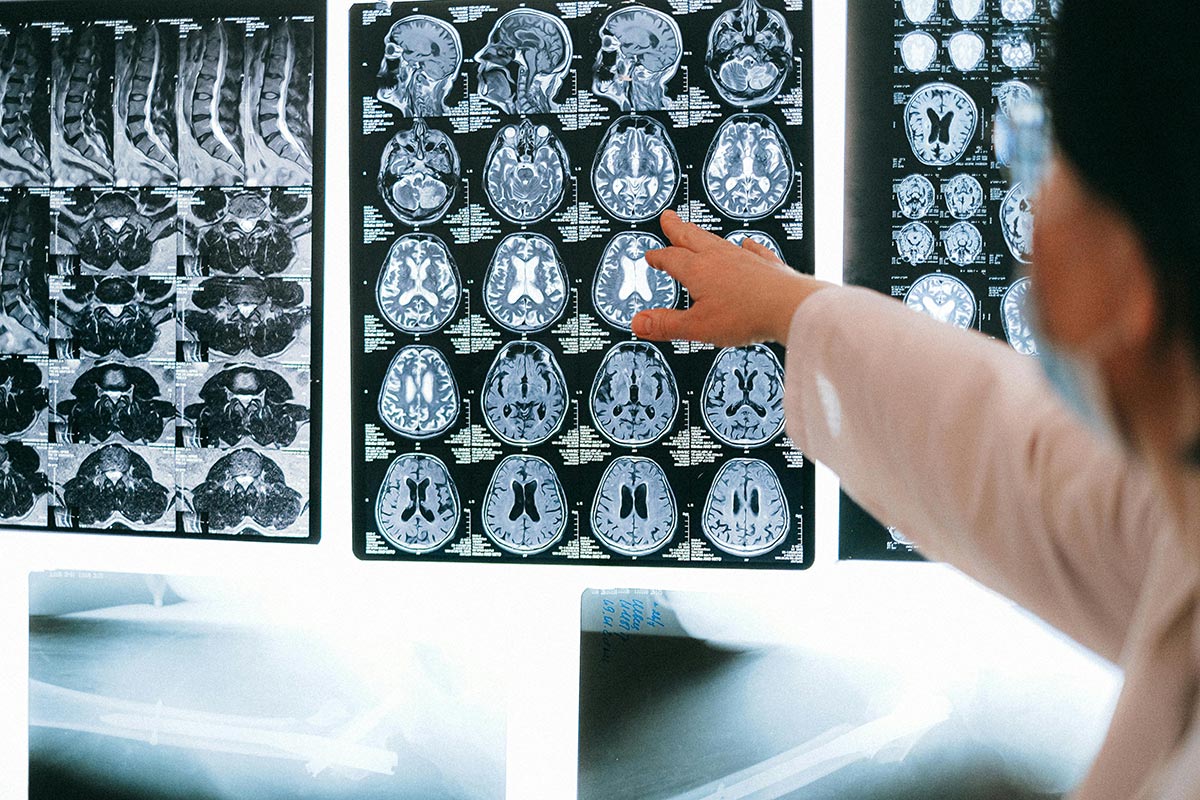
Understanding Mental Health Disorders
Mental health disorders are conditions that significantly affect an individual's thinking, behavior, mood, or feelings. They can be chronic or acute, with symptoms varying widely across different disorders. In this article, we delve into the most common types of mental disorders, their symptoms, causes, and the challenges faced by those affected.
Overview of Common Mental Disorders

What are the most common types of mental disorders?
Common types of mental disorders include several categories:
- Anxiety Disorders: Affecting over 40 million adults in the U.S., these encompass generalized anxiety disorder, panic attacks, social anxiety disorder, and PTSD.
- Mood Disorders: This category includes depression, characterized by persistent sadness and loss of interest, and bipolar disorder, which entails extreme mood swings between mania and depression.
- Psychotic Disorders: Conditions like schizophrenia, affecting approximately 0.25% to 0.64% of adults, manifest with hallucinations and delusions, severely impacting communication and perception.
- Other Disorders: Attention Deficit Hyperactivity Disorder (ADHD) impacts both children and adults, while Obsessive-Compulsive Disorder (OCD) features unwanted thoughts leading to repetitive behaviors. Eating disorders and substance use disorders are also prevalent, with significant implications for health.
How do these disorders impact individuals?
Mental health disorders can drastically affect daily living and relationships:
- Interpersonal Relationships: Conditions like depression and anxiety can hinder social interactions, leading to isolation and conflict with family and friends.
- Functionality: Individuals may find it challenging to maintain jobs or perform well academically, especially with ADHD or severe anxiety.
- Emotional Well-Being: Disorders often lead to emotional distress, impacting self-esteem and leading to more significant issues, such as suicidal thoughts in severe cases.
The complexity of these disorders underscores the need for early intervention and comprehensive treatment strategies to enhance quality of life.
Recognizing Mental Illness: Warning Signs

What are the warning signs of mental illness?
Recognizing the warning signs of mental illness is vital for timely intervention. Symptoms may include dramatic changes in mood, sleep, or appetite. A person might experience excessive worrying, feelings of sadness, irritability, or anger. Social withdrawal is another common indicator, where individuals begin to isolate themselves from friends and family.
Other warning signs can manifest as difficulty concentrating, neglecting personal hygiene, or a significant decline in performance at work or school.
In more serious instances, symptoms such as thoughts of self-harm or suicide, hallucinations, and extreme mood swings signal urgent help is needed. Each person’s experience may differ, so it’s essential to consider these signs holistically.
Importance of early detection
Early detection of mental health conditions can pave the way for effective treatment and support. Since many disorders, like anxiety and depression, often begin in adolescence or early adulthood, recognizing these symptoms early is crucial. Seeking help when multiple signs persist not only aids in recovery but also minimizes the long-term impact on an individual's life.
Taking steps to address mental health issues can prevent complications such as social isolation, dysfunctional relationships, or worsening health conditions. By fostering an environment open to discussions about mental health, we can encourage those in need to seek assistance.
Exploring the Causes of Mental Illness

What are the causes of mental illness?
Mental illness arises from a complex interplay of multiple factors, making it a deeply personal and varied experience for each individual. Some notable contributors to mental health disorders include:
- Genetic Predisposition: Certain mental conditions tend to run in families, indicating a hereditary link that can increase the likelihood of developing disorders like schizophrenia, bipolar disorder, and major depression.
- Biological Factors: Imbalances in neurotransmitters, such as serotonin and dopamine, play a significant role in many mental health conditions, affecting mood and behavior. Additionally, physical health issues or brain injuries can impact mental well-being.
- Psychological Factors: Personal experiences, coping mechanisms, and one's mental resilience significantly influence mental health. Individuals with a history of trauma, abuse, or chronic stress are at a higher risk.
- Environmental Influences: Socioeconomic factors, including poverty, isolation, and the presence of significant life stressors, can exacerbate predisposition toward mental illnesses.
By recognizing these interconnected causes, we can better understand the importance of early detection and intervention, which can greatly improve outcomes for those affected.
Living with Borderline Personality Disorder: Challenges and Implications
Symptoms and challenges of BPD
Borderline Personality Disorder (BPD) presents numerous challenges for individuals. Common symptoms include intense emotional experiences, rapid mood swings, and impulsive behaviors. This emotional instability can result in feelings of deep loneliness and confusion, as individuals may struggle to control their reactions to daily stressors.
The fear of abandonment is another hallmark of BPD. Individuals may perceive threats to their relationships, prompting strong reactions that can alienate friends and loved ones. These emotional responses can create a cycle of instability, further complicating interpersonal interactions.
Additionally, impulsive behaviors, such as reckless spending, substance use, or self-harm, often accompany the disorder. These actions can lead to harmful consequences, impacting both the individual’s wellbeing and their relationships.
Impact on relationships and daily life
Living with BPD can profoundly affect personal relationships. The erratic nature of mood swings and intense emotional responses can lead to conflicts, misunderstanding, and ultimately, breakdowns in relationships. Friends and family may feel confused or overwhelmed by the unpredictability, which can fuel feelings of isolation for the individual with BPD.
In daily life, the symptoms of BPD can hinder the ability to maintain stable employment or engage in social activities. This unpredictability can lead to a constant state of distress, making it challenging to function effectively in various aspects of life.
Coping with BPD requires a comprehensive approach involving therapy, emotional support, and self-care strategies to mitigate symptoms and enhance stability in daily living.
Understanding Psychotic Disorders: Symptoms and Management

What are the different types and examples of psychotic disorders?
Psychotic disorders are mental health conditions that severely disrupt an individual's perception of reality. Schizophrenia, one of the most well-known psychotic disorders, features symptoms such as hallucinations (seeing or hearing things that aren’t there), delusions (false beliefs), and disorganized thinking.
There are several subtypes of schizophrenia, including:
- Paranoid schizophrenia: Dominated by delusions and auditory hallucinations.
- Disorganized schizophrenia: Marked by disorganized speech and behavior.
- Catatonic schizophrenia: Characterized by abnormal motor behavior, including lack of movement or excessive movement.
Additionally, other types of psychotic disorders include:
- Schizoaffective Disorder: A blend of mood disorder symptoms (like depression) and schizophrenia.
- Brief Psychotic Disorder: Culminates in short-lived symptoms triggered by stress or trauma.
- Delusional Disorder: Predominantly driven by the presence of delusions without other major symptoms of schizophrenia.
- Substance-Induced Psychotic Disorder: Results from substance abuse, such as alcohol or drugs.
These disorders exhibit a diverse range of symptoms and severity, necessitating a nuanced understanding.
Treatment options
Treatment for psychotic disorders often involves a multi-faceted approach. Commonly, medications like antipsychotics are prescribed to help control symptoms. These may include:
- Risperidone
- Olanzapine
- Aripiprazole
In tandem with medication, therapy plays a crucial role. Therapeutic options such as cognitive behavioral therapy (CBT) can assist individuals in managing their thoughts and reactions. Supportive therapy or group therapy also provides social support, fostering a sense of community among those facing similar challenges.
In essence, effective treatment options—aiming to control symptoms and enhance quality of life—are vital for individuals coping with psychotic disorders.
Importance of Mental Health Education and Seeking Help

Educational Understanding of Mental Health Conditions
Understanding mental health is essential for recognizing the signs and symptoms associated with various mental disorders. By educating ourselves about conditions such as anxiety disorders, depression, bipolar disorder, and schizophrenia, we can foster a more compassionate environment. This awareness not only helps in early detection but also normalizes conversations around mental health, allowing individuals to seek help without stigma. With statistics indicating that approximately 1 in 5 U.S. adults experience mental illness annually, mental health education is vital in recognizing that these conditions are common and treatable.
Support Options Available for Individuals
Individuals facing mental health challenges have numerous support options available. Treatment can include psychotherapy, support groups, and, in some cases, medication. Resources such as hotlines and mental health organizations provide immediate assistance and guide individuals towards the appropriate care. Encouraging people to reach out for help can significantly improve their quality of life, leading to better coping strategies and resolution of symptoms. Building a network of support—friends, family, or professionals—further enhances the likelihood of positive outcomes.
The Path Towards Better Mental Health
Understanding mental health disorders is crucial for fostering a society that supports those affected by such conditions. Early diagnosis, comprehensive understanding, and educational outreach can play significant roles in alleviating the challenges associated with mental illnesses. Encouraging open dialogue and advocating for adequate mental health resources are essential steps towards ensuring that individuals receive the care and support they need. By coming together as a community, we can break the stigma and pave the way for improved mental health outcomes.
References
- Types of mental health issues and illnesses - Better Health Channel
- Mental Disorders - MedlinePlus
- Types of Mental Illness - WebMD
- Mental Health Disorders: Types, Diagnosis & Treatment Options
- Mental health problems | What types are there? - Mind
- Statistics - National Institute of Mental Health (NIMH)
- Health Topics - National Institute of Mental Health (NIMH)
.svg)





